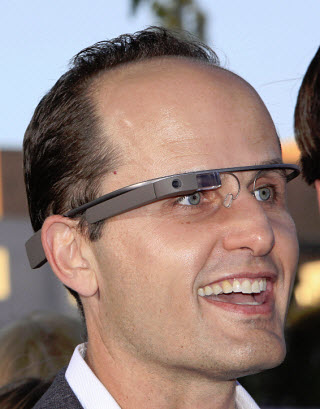These augmented reality glasses are being tested for use with medical conditions.
Starting at the end of last week, the emergency department at Rhode Island Hospital became the first one in the country to start to use Google Glass and its associated wearable technology for streaming live images of the medical conditions of the patients who were being seen there, in order to be able to consult with a specialist who was located somewhere other than in the hospital.
This is the start of a feasibility study that is meant to test the augmented reality glasses for six months.
Should the use of the Google Glass prove to be successful, Dr. Paul Porter, the project coordinator, believes that the use of these mobile devices will only expand in the medical arena. Potential users could include first responders in ambulances, surgeons, and others who could benefit from the recommendations of specialists while they are on the field or when there is no local specialist available.
Porter is highly enthusiastic about the possibilities for Google Glass in the health care environment.
He stated that it would be “like the Holy Grail” but added that “we’re just at the beginning; you have to start somewhere.” At the moment, the hospital will continue to test this wearable technology exclusively with emergency room patients who are suffering from various forms of dermatological struggles, such as skin rashes. These patients must volunteer to be a part of the study as opposed to being automatically entered into it.
The reason is that Porter feels that the standard of health care at the moment makes it so that handling these types of problems within an emergency room typically involves a basic visual inspection while asking the patient certain types of questions such as whether or not it is itchy, painful, etc.
The reason that these specific types of cases have been chosen for testing Google Glass in the emergency room is that if any glitches should occur within this wearable technology – such as a loss of the connection for audio or video – then the life and health of the patient will not be placed at risk.
Even among users of these smartphone based wallets, the services aren’t used for most purchases.
Although mobile payments, as a whole, have started to attract the interest of some consumers, they are not providing the true adoption rates that would be required to call this transaction method an actual mainstream success.
Mobile wallets are being used by only 16 percent of device owners.
Moreover, even among those who actually use them, only very few are using them all that often, says a Yankee Group report that has recently been published. It stated that over the three months before the report, only 16 percent of smartphone owners actually used those devices for making a purchase in store.
The report showed that despite this, two thirds of consumers are actually interested in mobile payments.
The report was titled “U.S. Mobile Wallet Roundup: Gauging the Future Potential of Today’s Solutions”. It explained that while there is widespread interest in these wallets, that is not translating into actual adoption, quite yet. That report also assigned PayPal the top spot within this particular space, as 15 percent of consumers had use the company’s app within the previous month for making a purchase in-store.
Within the report, a Yankee Group analyst named Jordan McKee pointed out that every day seems to produce another level of growth when it comes to mobile wallets. However, the actual success in that area is not quite as defined as the hype, itself. McKee added that despite the fact that there have been massive investments throughout this environment, which have been worth billions of dollars, the actual uptake and use of this technology has been far less than “illustrious”.
Among those who are actually using mobile payments, 73 percent are doing so less than five times per month. This indicates that this type of transaction still has a long way to go before it is the top choice among even those consumers who are actually using it – which are clearly in the minority. It is the opinion of the report that this will not see a drastic “change anytime soon”, though they do feel that there is great potential over time due to the massive consumer interest.



